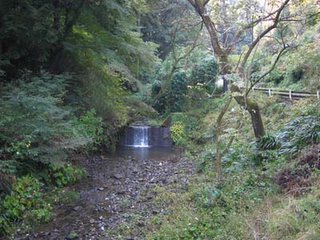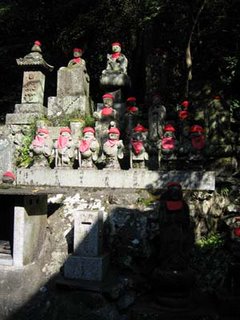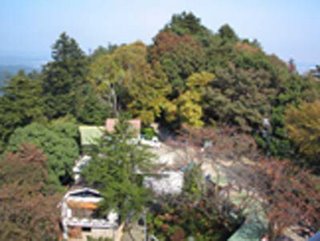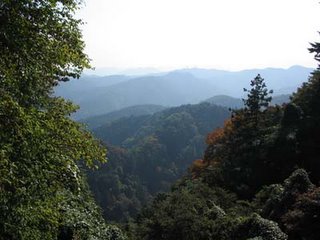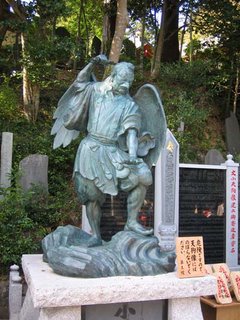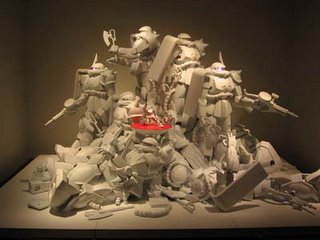On the train I crossed another thing off of my “to-do in Japan” list (although I didn’t think this one would be as hard as it was) I finally saw Mt. Fuji today. As the train was rolling along I was sort of zoning out, as everyone on the train does, and I realized, that snow-capped thing in the distance was Fuji-san. Finally!
I didn’t do a whole lot of research on Yokohama before I went (just Googled the city’s website and read the blurb in my travel guide.) Leaving the station I wandered towards what felt like downtown. I soon found a map board and confirmed that I was headed in the right direction. A short while later I saw a very tall building in the distance. Thinking it would be a good vantage point to check out the surroundings I then headed towards my new goal.
On the way I walked along a stretch of raised freeway/railway on which graffiti artists had had their way. I do not promote or condone wanton acts of vandalism, but the graffiti here was awesome. The raised section goes on for about a kilometer and the whole thing is covered in paint. There’s the usual name art and graffiti characters, but if you think it’s hard to read graffiti in the states, try reading it when the artists use 4 character sets (romanji, hiragana, katakana, and kanji). Also, if you still have lingering thoughts as to the impact of “anime” on Japanese culture, even the graffiti is influenced.
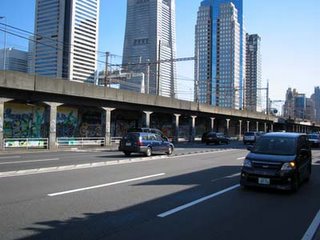
 Neon Genesis Evangelion Graffiti! Awesome!
Neon Genesis Evangelion Graffiti! Awesome!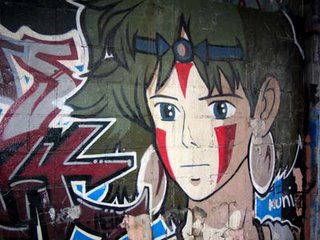 Mononoke Hime (Princess Mononoke) Graffiti, I’m sure Miazaki would be flattered.
Mononoke Hime (Princess Mononoke) Graffiti, I’m sure Miazaki would be flattered.
 Sort of painted over, but it seems there are Simpsons fans in Japan too.
Sort of painted over, but it seems there are Simpsons fans in Japan too.
I stopped ogling the art long enough to stop in here: A little smaller, but more or less just like a Harley dealer in the states.
A little smaller, but more or less just like a Harley dealer in the states.
A few block later I arrived here: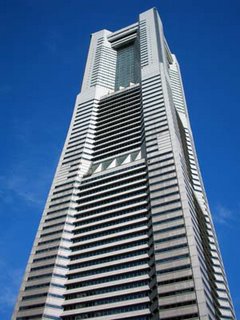 The “Sky Garden” observatory on the 69th floor of the Yokohama Landmark Tower is Japan’s highest observatory. Landmark Tower, actually, is the tallest building in Japan at 296 meters. The observatory has the fastest elevator in Japan, whisking visitors from the second to 69th floor in only 40 seconds. The admission fee was a little steep (a whole lot more than the free Tokyo Government building) but well worth it. Today, going against all forecasts, was absolutely beautiful. Unfortunately by the time I got to the tower, the summit of Fuji-san was back behind it’s protective cloud cover. Another thing of note was that they were playing Christmas carols in the sky garden. It was kind of creep actually…
The “Sky Garden” observatory on the 69th floor of the Yokohama Landmark Tower is Japan’s highest observatory. Landmark Tower, actually, is the tallest building in Japan at 296 meters. The observatory has the fastest elevator in Japan, whisking visitors from the second to 69th floor in only 40 seconds. The admission fee was a little steep (a whole lot more than the free Tokyo Government building) but well worth it. Today, going against all forecasts, was absolutely beautiful. Unfortunately by the time I got to the tower, the summit of Fuji-san was back behind it’s protective cloud cover. Another thing of note was that they were playing Christmas carols in the sky garden. It was kind of creep actually… Oh, um, vertigo warning.
Oh, um, vertigo warning.
While walking around and taking pictures, I was what looked like someplace I had read about in my guide book from the tower. After felt like I had got my moneys worth, I headed out and towards the place I saw. After a minute or two of walking about, I realized that seeing how to get somewhere from 273 meters up is quite different from doing at street level.
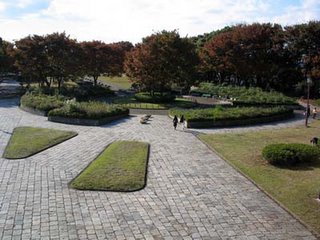 Eventually I did find what I saw from the tower, but it wasn’t what I had read about in the guide book. Instead it was a combination park and zoo. I walked around the park for a while, but didn’t go in the zoo.
Eventually I did find what I saw from the tower, but it wasn’t what I had read about in the guide book. Instead it was a combination park and zoo. I walked around the park for a while, but didn’t go in the zoo.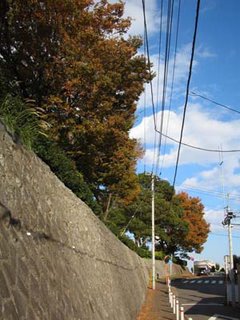 The leaves are definitely changing now. According to one report I saw it seems that the change is coming two weeks late this year. Global warming anyone?
The leaves are definitely changing now. According to one report I saw it seems that the change is coming two weeks late this year. Global warming anyone?
After my walk in the park, I headed back in the direction of the Landmark Tower and the port area. Yokohama’s port never really revived after the Allied bombing in 1945. Made worse by the slow down in the economy since the early 90’s, Yokohama had enacted several projects to change the port area to more commercial and retail space (ala Odaiba.) One such project uses old rail road track bed to connect a man made island to the mainland. The island is actually quite old and is home to two renovated 19th century warehouses that have been made into retail space. Other projects include a waterfront park and a very nice international cruise dock.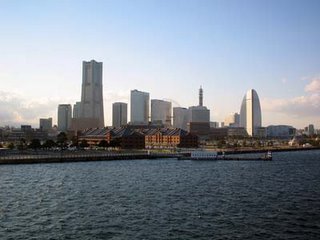 Yokohama waterfront from the cruise dock. Along the water are the warehouses. Back left is Landmark Tower. The orange-slice shaped building back right is part of a huge convention center (another port revival project).
Yokohama waterfront from the cruise dock. Along the water are the warehouses. Back left is Landmark Tower. The orange-slice shaped building back right is part of a huge convention center (another port revival project).
I know you’re thinking, when is he going to get to the part where he goes to china-town? (Assuming you know that Yokohama is home to the world’s largest china-town.) In fact, I almost missed it all together. As the sun set and I was getting ready to head home, I checked a map to see where the closest train station was. I noticed the closest one was on the other side of “chuu-ku”, “chu-goku-machi”. It took a minute for my brain to catch up and realize I had to pass through “china city, china-town” to get to the train station. I can’t say I actually did more than pass through it, however, as I had a late lunch and wasn’t hungry.
So that’s today’s travels. I think tomorrow will be another rest and relax day. I may do a little adventuring, but probably just around the Shimotakaido area.
Ja Mata Ne.
